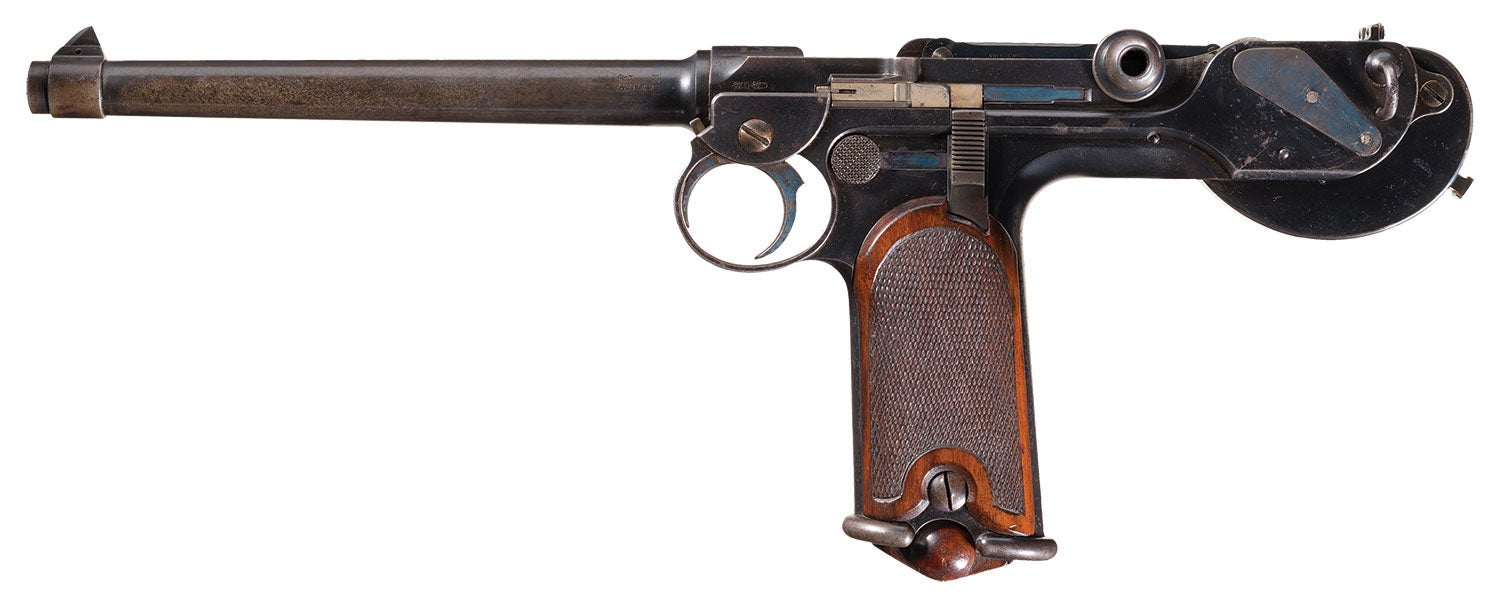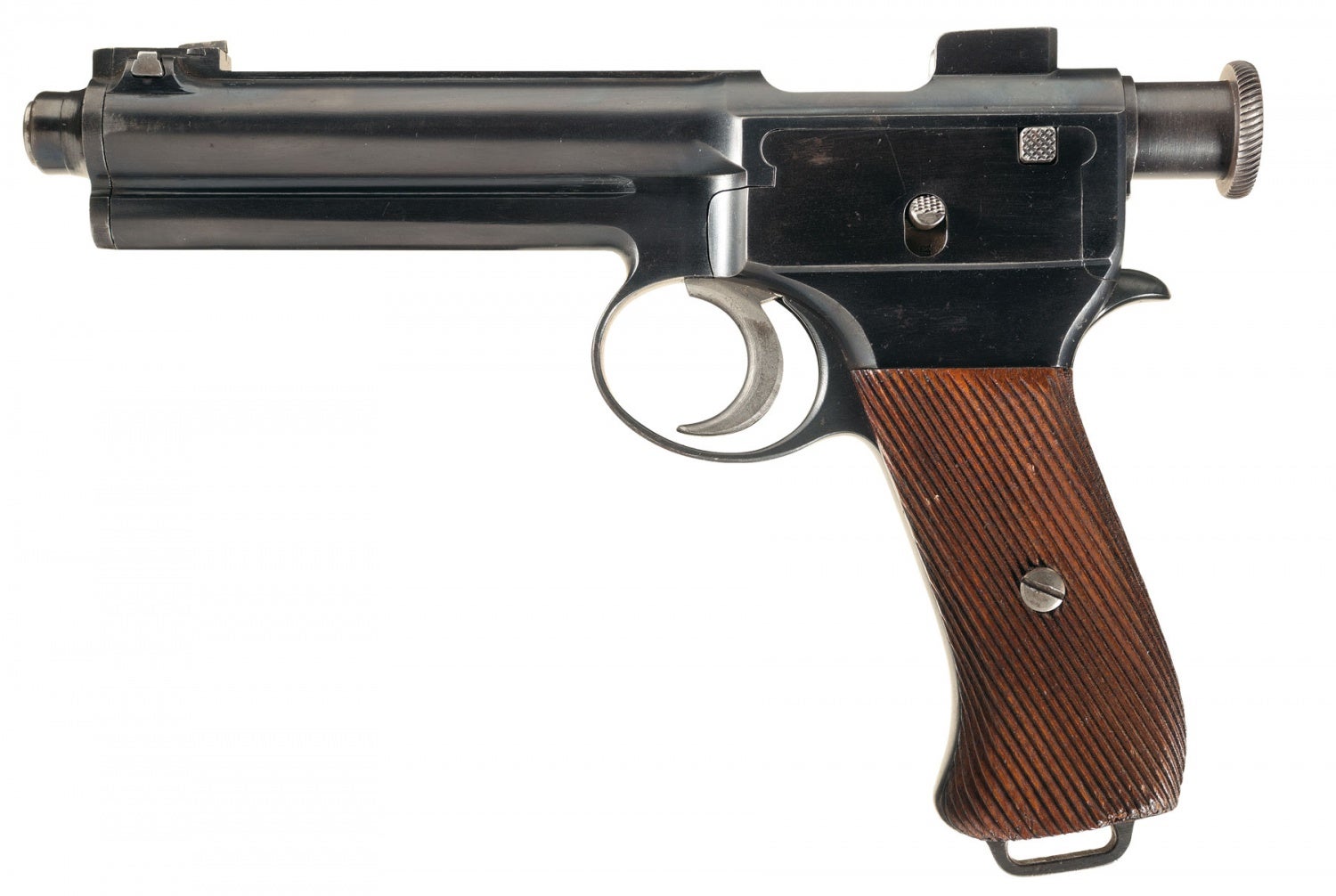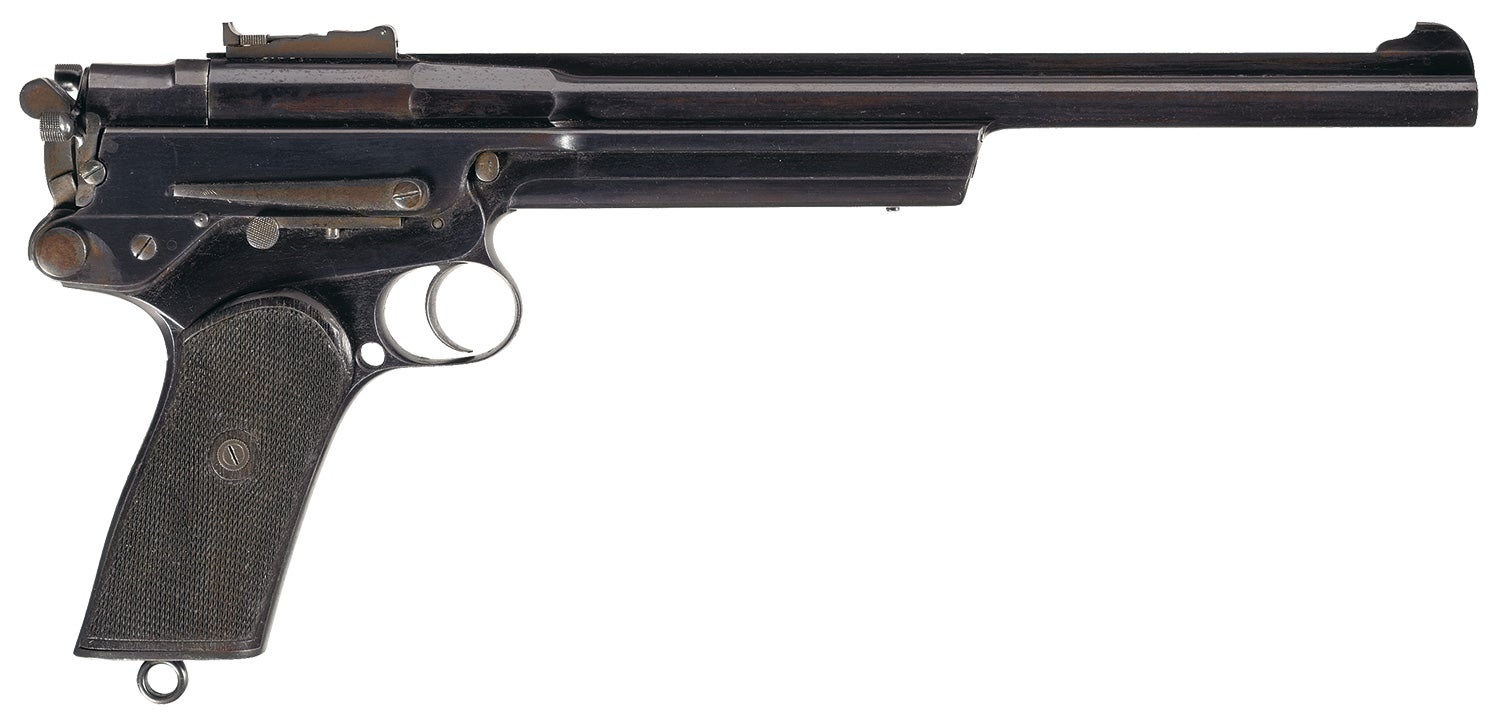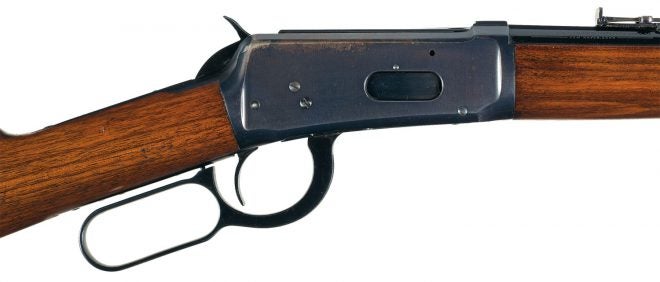Imagine an alternate universe in which Hollywood has spent decades making genre movies in which every single main character uses a Borchardt C93, and now factories are cranking out almost nothing but cast steel facsimiles of Borchardts to meet the demand based entirely on these movies. All other semiauto pistol designs never took off in sales and remained curios with the exception of the Roth-Steyr M1907 which had a production run of about a million units over a century, and which hasn’t been made since 1997. The other exception is the Gabbett-Fairfax Mars, which remains in limited production and is used only where people need more power than 7.65mm Borchardt.

You get to pick between one of these three pistols, except that they have all been redesigned for and made using modern manufacturing techniques. Everything else has turned out to be a market flop. Image source: Rock Island Auction.
In that alternate universe, you would be perfectly justified in saying semiauto pistols suck. Now I’m going to tell you a secret: We live in this universe, but for lever-actions instead of semiauto pistols.
I cannot seem to escape an issue that has come up several times in the comments section: I think lever-actions suck, and a lot of people are not happy with that.

In Dimension C-137, this is the best pistol ever made. There, production ended in 1997 and the parent company now makes a successful line of budget revolvers. Image source: Rock Island Auction
I know what you’re thinking, but this isn’t going to be me railing on for 1500 words about how terrible I think these guns are, or how when I was young a roving gang of Rossi 92s murdered my parents in cold blood in an alley one fateful night. Instead, I want to come at this from a different angle, a more positive (although still critical) one.

In Dimension C-137, if you want to go hunting with a semiauto pistol, you have to use one of these. That’s… Not that different from our timeline, actually. Image source: Rock Island Auction.
I’ve used extreme examples in the imaginary scenario above (is the Browning BLR really as convoluted and weird as the Gabbett-Fairfax Mars? No) to make a point, but we can see a lot of analogies in modern lever action rifles. Most of the lever action designs available on the market today exist because of tradition and a certain kind of desired appearance. They have been altered for production according to modern low-labor manufacturing methods, which causes some problems considering the original designs were intended to be produced according to high-labor turn of the century methods that are no longer cost effective. Even minor design changes to existing lever action designs would substantially improve them (cantilevering the magazine tube and deleting or moving the barrel band, and using a socket arrangement instead of a tang mount for the stock immediately come to mind for rifles like the 1894 and 336), and a substantial overhaul to the entire concept wouldn’t be unwelcome, either. Yet, even though this has been attempted several times, almost all of those attempts either flopped or have now been discontinued (e.g., the Savage 99, probably the best lever action ever made).
Lever-action rifles could be great, but they’re yoked to 150 year old conventions that do nothing but drag on their functionality. Even developments like the Browning BLR and Henry Long Ranger, which I appreciate for not using tubular magazines, still conform to a Western box receiver aesthetic that – although pleasing to many – gives them higher MSRPs than forged receiver bolt action rifles, while still having to be either made outside the country or from less expensive castings.
I don’t want the traditional lever action rifle “cowboy gun” to go away, far from it. I would, however, like for the industry to step outside the box to make something with a lever that is truly better than what was possible over 120 years ago, and for the consumer market to reward them for doing it.
 Your Privacy Choices
Your Privacy Choices
